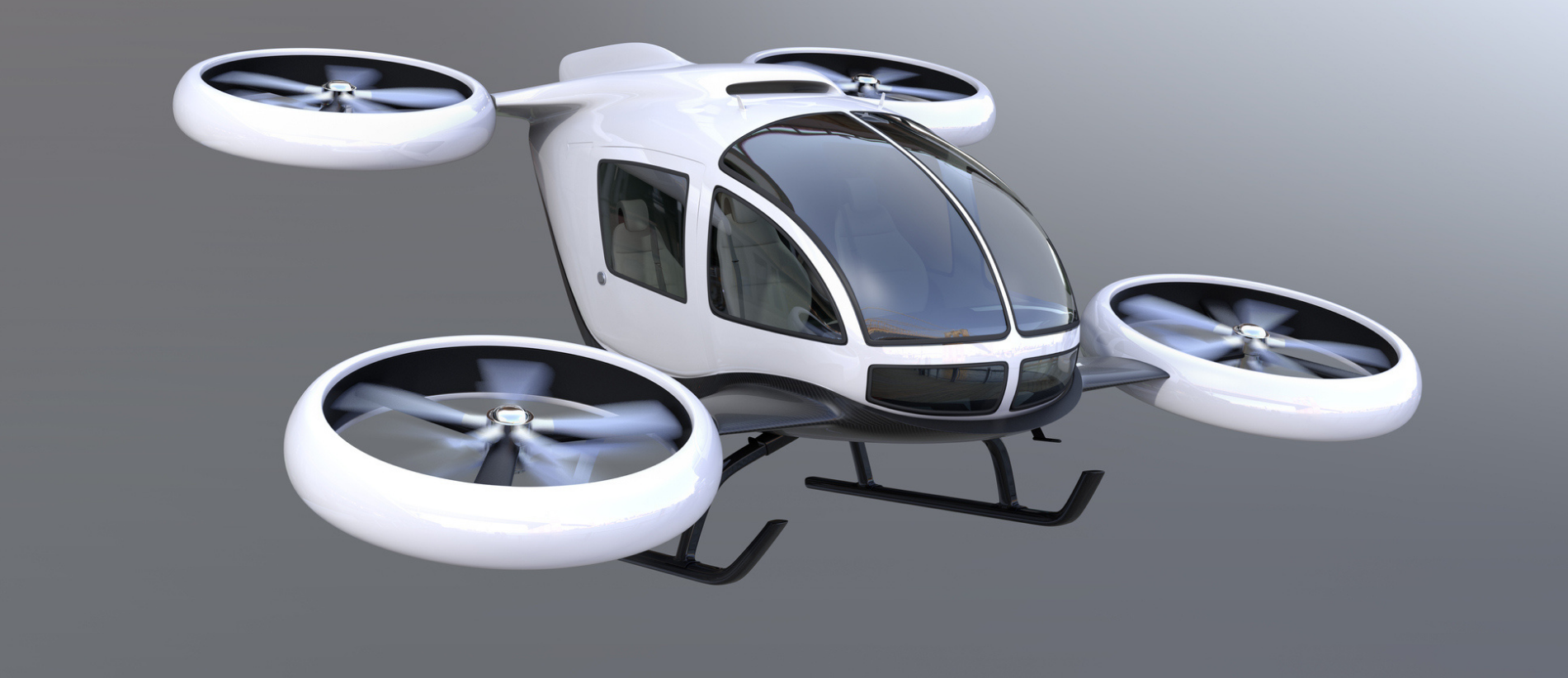Flying autonomous vehicles transporting passengers and goods in busy metropolitan areas were long deemed a science fiction scenario. It is now quickly becoming reality.
In January, South Korean car manufacturer Hyundai unveiled its electric vertical-takeoff-and-landing (eVTOL) air taxi concept. The eVTOL has a range of 60-miles (100 km) and a cruising speed of up to 180 mph (290 km/h). Hyundai has entered a partnership with Uber and plans to invest $1.5 billion in urban air mobility over the next five years.
Similarly to helicopters, VTOL’s don’t require long runways and have rotating wings and sometimes rotors in place of propellers. They come in several shapes and dimensions. While most of them look like oversized drones, some resemble fixed-wing aircraft. Several concept models are currently in the testing phase, some operating autonomously and others with a pilot. VTOL’s use electric or hybrid-electric propulsion.
In October 2019 China’s Ehang delivered (opens a new window)its second batch of “passenger grade” autonomous aerial vehicles (AAVs) to customers in Asia, Europe and North America. The Ehang 216 is an autonomous eVTOL specifically designed to address the urban transport needs by providing on-demand air taxi services. It can carry payloads of up to 260kg and accommodate two passengers plus baggage. The vehicles are expected to be used in tourism, medical emergencies and general transportation. Ehang has recently received approval from local and national regulators to launch a commercial air mobility service in Guangzhou, China.
A buzzing sector
Competition in the field is growing fast. Overall, there are currently more than 130 companies producing and testing prototype eVTOLs, according to the Vertical Flight Society (VFS) World eVTOL Aircraft Directory.
Among companies seizing the opportunities are start-ups like California-based Joby Aviation and Germany’s Lilium who are already presenting their vehicles to potential investors and clients, as well as large multinational conglomerates. Airbus is testing its all-electric, self-piloted, VTOL aircraft named Vahana and in October 2019, Porsche and Boeing partnered to explore the urban air mobility market.
Uber has created a ride-sharing and cargo delivery platform – Uber Elevate – to prepare for flight demonstrations in select US cities by 2020 with an eye to reach full operational capacity by 2023. A 2018 study by Porsche Consulting forecasts that the urban air mobility market will pick up speed after 2025.
Laying the groundworks
The advantages of eVTOLs are manifold. For one they help reducing road traffic congestion, commuting time and air pollution. Their use extends from human transportation to assisting law enforcement activities and medical support operations as well as conducting freight deliveries. While they are the natural evolution of the helicopter, eVTOL’s are cheaper, emit lower emissions and produce less noise. However, to make them a viable alternative to overcrowded roads and highways, regulators, businesses and insurers need to agree on a workable concept.
Regulators and businesses will need to agree on rules and standards that ensure the safety of urban air traffic and there are some challenges ahead. Barriers to commercial success include the safety of the guiding technology, which will include an air traffic control (ATC) system that can monitor both manned and unmanned traffic. To create a truly unified traffic management system, additional infrastructure may need to be installed along predefined flight corridors to aid high-speed data communications and geolocation. The operation will also require new infrastructure in the form of landing areas, charging stations and customer access points.
From a regulatory perspective, governments need to clarify where these vehicles will be allowed to operate (air space allocation), which areas are off limits and the minimum insurance requirements. Aviation regulators will have to clarify a pilot’s licence requirements if applicable and/or vehicle certification requirements.
The European Union Air Safety Agency (EASA), the regulatory body that provides the rules of the skies needed for commercial airlines and other air travel providers to operate, has already released new certification guidelines that set the stage for commercial operation of both hybrid and electric VTOL craft. The US Federal Aviation Administration (FAA) has started discussing certification options with some manufacturers.
The challenge for insurers
VTOLs will need specific insurance solutions for passenger safety and operators’ liability, particularly in case of an autonomous version, as these create new insurance risks for liability transfer and potentially large injury/damage claims. Autonomous VTOLs will rely on artificial intelligence (AI) and accurate satellite communication to navigate. Similarly to autonomous cars, liability questions are going to shift from pilots to developers, manufacturers or operators in case of accidents. A major threat to the operations will be cyber security.
The challenge for insurers and reinsurers will be to assess the risk exposures of the operations without the benefit of adequate historical data. While hull and physical damage protection may remain similar to aviation coverages already in place, liability scenarios are likely to vary significantly and resemble more the risk exposure of drones and autonomous vehicles, which are both currently being developed and tested.
For further information, please contact:
Jeremy Bloom
Senior Vice President, Aviation Division
Direct Tel: +44 (0) 20 7933 2463
E-Mail: Jeremy.bloom@uk.lockton.com (opens a new window)

